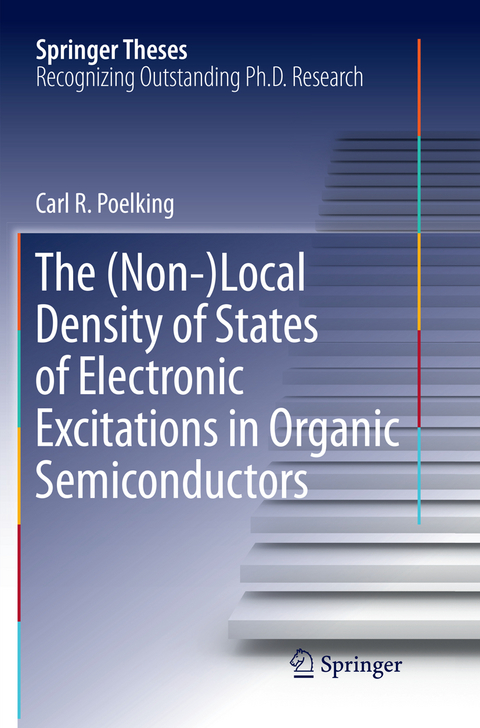
The (Non-)Local Density of States of Electronic Excitations in Organic Semiconductors
Seiten
2018
|
1. Softcover reprint of the original 1st ed. 2018
Springer International Publishing (Verlag)
978-3-319-88809-5 (ISBN)
Springer International Publishing (Verlag)
978-3-319-88809-5 (ISBN)
This book focuses on the microscopic understanding of the function of organic semiconductors. By tracing the link between their morphological structure and electronic properties across multiple scales, it represents an important advance in this direction.
Organic semiconductors are materials at the interface between hard and soft matter: they combine structural variability, processibility and mechanical flexibility with the ability to efficiently transport charge and energy. This unique set of properties makes them a promising class of materials for electronic devices, including organic solar cells and light-emitting diodes. Understanding their function at the microscopic scale - the goal of this work - is a prerequisite for the rational design and optimization of the underlying materials. Based on new multiscale simulation protocols, the book studies the complex interplay between molecular architecture, supramolecular organization and electronic structure in order to reveal why some materials perform well - and why others do not. In particular, by examining the long-range effects that interrelate microscopic states and mesoscopic structure in these materials, the book provides qualitative and quantitative insights into e.g. the charge-generation process, which also serve as a basis for new optimization strategies.
Organic semiconductors are materials at the interface between hard and soft matter: they combine structural variability, processibility and mechanical flexibility with the ability to efficiently transport charge and energy. This unique set of properties makes them a promising class of materials for electronic devices, including organic solar cells and light-emitting diodes. Understanding their function at the microscopic scale - the goal of this work - is a prerequisite for the rational design and optimization of the underlying materials. Based on new multiscale simulation protocols, the book studies the complex interplay between molecular architecture, supramolecular organization and electronic structure in order to reveal why some materials perform well - and why others do not. In particular, by examining the long-range effects that interrelate microscopic states and mesoscopic structure in these materials, the book provides qualitative and quantitative insights into e.g. the charge-generation process, which also serve as a basis for new optimization strategies.
Organic Electronics in a Nutshell.- Particle-Based Models.- Long-Range Polarized Embedding of Electronic Excitations.- Charge Carriers at Organic-Organic Interfaces.- Charge Carriers in Disordered Bulk Mesophases.- Charge Transfer States at Donor-Acceptor Heterojunctions.- Conclusions & Outlook.
| Erscheint lt. Verlag | 25.8.2018 |
|---|---|
| Reihe/Serie | Springer Theses |
| Zusatzinfo | XIV, 133 p. 42 illus. in color. |
| Verlagsort | Cham |
| Sprache | englisch |
| Maße | 155 x 235 mm |
| Gewicht | 237 g |
| Themenwelt | Naturwissenschaften ► Chemie ► Organische Chemie |
| Naturwissenschaften ► Physik / Astronomie ► Angewandte Physik | |
| Naturwissenschaften ► Physik / Astronomie ► Atom- / Kern- / Molekularphysik | |
| Technik ► Elektrotechnik / Energietechnik | |
| Schlagworte | Charge Transfer States • Charge Transport in Organic Semiconductors • energy landscape • Long-range Interactions in Organic Semiconductors • Multiscale simulations • Nonlocal Density of States • Organic semiconductors • organic solar cells |
| ISBN-10 | 3-319-88809-9 / 3319888099 |
| ISBN-13 | 978-3-319-88809-5 / 9783319888095 |
| Zustand | Neuware |
| Haben Sie eine Frage zum Produkt? |
Mehr entdecken
aus dem Bereich
aus dem Bereich


